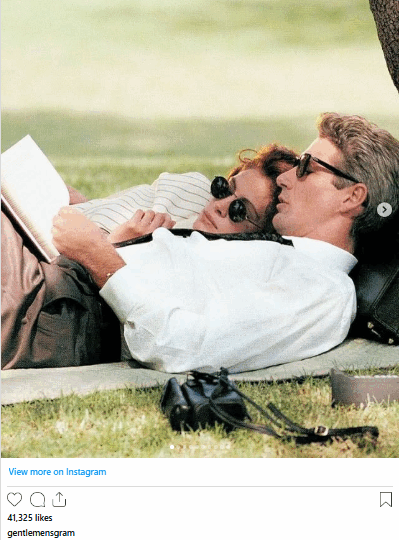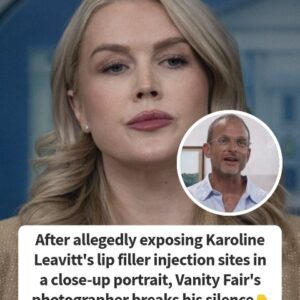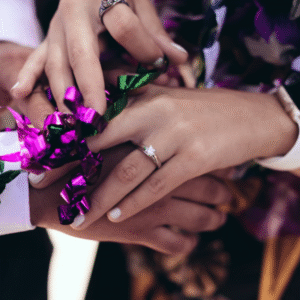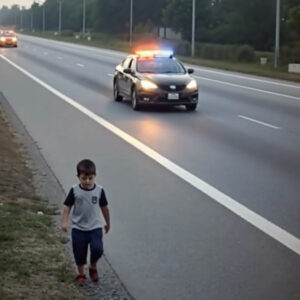Yet, even after seeing it dozens of times, there are still small mistakes, continuity errors, and behind-the-scenes stories that most viewers never notice.
These little details give a fascinating glimpse into how this beloved romantic comedy was made — a film that became a defining moment in Hollywood history.
We all know Pretty Woman as a charming romantic comedy that launched Julia Roberts and Richard Gere into superstardom, but the original screenplay was far darker.
Titled 3,000, it was written by struggling screenwriter J.F. Lawton and explored weighty themes of societal inequality, class disparity, and the struggles faced by sex workers in Los Angeles.
The story was gritty and realistic, a sharp contrast to the feel-good movie audiences eventually saw.
When Disney got involved, they wanted a more commercially appealing, family-friendly approach.
The darker social commentary was downplayed, and the focus shifted to romance, humor, and glamour.
With a bigger budget, Disney transformed the film into a story that would appeal to a wide audience, while still hinting at the original tension between class and wealth in the background.
This decision turned Pretty Woman into one of the most iconic romantic comedies of the 1990s.
Al Pacino almost played Edward Lewis
It’s almost impossible to picture anyone other than Richard Gere as Edward Lewis, the wealthy New York businessman who hires Vivian (Julia Roberts) as an escort for a week.
Yet, in the early stages of casting, Al Pacino was considered for the role.
Pacino even participated in a reading with Julia Roberts. He reportedly enjoyed the script but decided not to take the role for reasons he never fully revealed.
In hindsight, he praised Roberts, who at the time was still relatively unknown.
“I mean, you could tell at the reading, this is going to be good, this is going to be a hit picture. You just knew it,” Pacino said in an interview.

He continued: “And this girl was phenomenal. I said to Gary, ‘Where did you get this girl?’” (Gary Marshall being the director).
Pacino’s instincts were spot on. Roberts’ performance became career-defining, and her chemistry with Gere is one of the reasons the film remains so beloved.
The croissant becomes a pancake
One of the film’s funniest unnoticed bloopers happens in the breakfast scene.
Vivian starts eating a croissant while chatting with Edward, but in the very next shot, the croissant has inexplicably transformed into a pancake.
Director Garry Marshall admitted he preferred the takes where Roberts ate a pancake, so he kept them.
This created a minor continuity issue: the bite marks on the pancake change between shots. Eagle-eyed viewers might notice this small but amusing detail.
The red dress that changed everything
Few movie costumes have left as strong a mark as Vivian’s red dress during the opera scene.
This dress represents transformation, confidence, and empowerment. Vogue described it as “eye-catching, incredibly sexy without losing an ounce of elegance.”
The genius behind the dress was award-winning costume designer Marilyn Vance.
She created six key outfits for Julia Roberts, including the brown-and-white polka dot dress worn to the horse races, which she made from vintage silk found in a small Los Angeles antique fabric store.
Every outfit — including Richard Gere’s suits — was meticulously designed to reflect the characters’ personalities.
Even Vivian’s shoes, like her Chanel heels, were carefully chosen to complete her stylish transformations.

Richard Gere’s tie had a personality of its own
Edward Lewis’ wardrobe also has small quirks. The tie Vivian buys him in the store seems simple, but it subtly changes knots throughout the film.
During the polo match, he wears it in a half-Windsor knot, but in a later scene, it appears as a full-Windsor knot, and his shirt collar style shifts as well.
These small continuity errors are fun little details for attentive viewers.
The “obscene” shopping spree
When Edward introduces Vivian to Beverly Hills luxury, he takes her on a shopping spree down Rodeo Drive.
Designer Marilyn Vance estimated that Vivian’s spending on that scene alone would have totaled roughly $30,000.
From designer dresses to jewelry, it’s a scene that perfectly captures the dizzying effect of wealth and indulgence.
The ruby-and-diamond necklace was real
The necklace Vivian wears with her iconic red gown is worth a staggering $250,000.
Made of real rubies and diamonds, the jewelry was guarded by an armed security team during filming, ensuring it remained safe.
This attention to authenticity added a sense of realism to the film’s high-society scenes.
The jewelry box scene was a prank
The moment when the jewelry box snaps shut on Vivian’s fingers was originally intended as a gag.
Garry Marshall and Richard Gere played a prank on the young Julia Roberts, who occasionally arrived on set sleepy.
The box was soft, ensuring she wasn’t hurt, but her genuinely surprised and charming reaction was so perfect that it became part of the final film.
Edward’s disappearing shoes and other continuity errors
In another continuity quirk, when Vivian removes Edward’s shoes after the opera, they mysteriously reappear in the following shot.
Similarly, when Edward gives Vivian $100 and she hides it in her boot, the money disappears later when she takes off the boots.
The four colorful condoms Vivian shows Edward in another scene also change order between shots, showing that even small props had a mind of their own.
Richard Gere’s perspective on Edward
While the film was a career boost for Gere, he has admitted he wasn’t always happy with his character.
He described Edward as “criminally underwritten” and joked that he was “just a suit with a good haircut.”
One scene, featuring Edward playing the piano while Vivian approaches, was improvised. Director Garry Marshall asked Gere what he normally does late at night in a hotel, and the scene evolved naturally from that conversation.
Julia Roberts convinced Gere to do the movie
Despite Al Pacino’s early involvement, Roberts wanted Gere as her co-star and actively persuaded him to accept the role. She even wrote him a note saying, “Please say yes.”
Gere later recalled this flirty and genuine exchange, which eventually led to one of the most iconic on-screen pairings in film history.
More than on-screen chemistry
The chemistry between Roberts and Gere wasn’t limited to the camera. They became close friends off-screen, speaking multiple times a day during filming and remaining in touch for years afterward.
Director Garry Marshall noticed their natural rapport from the very beginning, even when they were alone together without cameras.
The film’s lasting legacy
Even with all its bloopers, continuity errors, and behind-the-scenes pranks, Pretty Woman remains a cinematic classic.
The film’s charm comes not only from the love story but also from its imperfections, the unscripted moments, and the authentic chemistry between its stars.
It’s a movie that continues to delight audiences decades later, proving that charm, humor, and genuine human connection can overcome even the tiniest mistakes.
Did we miss your favorite Pretty Woman blooper or behind-the-scenes story? Share it, and let the magic of this timeless film continue to enchant new viewers every year.
Yet, even after seeing it dozens of times, there are still small mistakes, continuity errors, and behind-the-scenes stories that most viewers never notice.
These little details give a fascinating glimpse into how this beloved romantic comedy was made — a film that became a defining moment in Hollywood history.
We all know Pretty Woman as a charming romantic comedy that launched Julia Roberts and Richard Gere into superstardom, but the original screenplay was far darker.
Titled 3,000, it was written by struggling screenwriter J.F. Lawton and explored weighty themes of societal inequality, class disparity, and the struggles faced by sex workers in Los Angeles.
The story was gritty and realistic, a sharp contrast to the feel-good movie audiences eventually saw.
When Disney got involved, they wanted a more commercially appealing, family-friendly approach.
The darker social commentary was downplayed, and the focus shifted to romance, humor, and glamour.
With a bigger budget, Disney transformed the film into a story that would appeal to a wide audience, while still hinting at the original tension between class and wealth in the background.
This decision turned Pretty Woman into one of the most iconic romantic comedies of the 1990s.
Al Pacino almost played Edward Lewis
It’s almost impossible to picture anyone other than Richard Gere as Edward Lewis, the wealthy New York businessman who hires Vivian (Julia Roberts) as an escort for a week.
Yet, in the early stages of casting, Al Pacino was considered for the role.
Pacino even participated in a reading with Julia Roberts. He reportedly enjoyed the script but decided not to take the role for reasons he never fully revealed.
In hindsight, he praised Roberts, who at the time was still relatively unknown.
“I mean, you could tell at the reading, this is going to be good, this is going to be a hit picture. You just knew it,” Pacino said in an interview.

He continued: “And this girl was phenomenal. I said to Gary, ‘Where did you get this girl?’” (Gary Marshall being the director).
Pacino’s instincts were spot on. Roberts’ performance became career-defining, and her chemistry with Gere is one of the reasons the film remains so beloved.
The croissant becomes a pancake
One of the film’s funniest unnoticed bloopers happens in the breakfast scene.
Vivian starts eating a croissant while chatting with Edward, but in the very next shot, the croissant has inexplicably transformed into a pancake.
Director Garry Marshall admitted he preferred the takes where Roberts ate a pancake, so he kept them.
This created a minor continuity issue: the bite marks on the pancake change between shots. Eagle-eyed viewers might notice this small but amusing detail.
The red dress that changed everything
Few movie costumes have left as strong a mark as Vivian’s red dress during the opera scene.
This dress represents transformation, confidence, and empowerment. Vogue described it as “eye-catching, incredibly sexy without losing an ounce of elegance.”
The genius behind the dress was award-winning costume designer Marilyn Vance.
She created six key outfits for Julia Roberts, including the brown-and-white polka dot dress worn to the horse races, which she made from vintage silk found in a small Los Angeles antique fabric store.
Every outfit — including Richard Gere’s suits — was meticulously designed to reflect the characters’ personalities.
Even Vivian’s shoes, like her Chanel heels, were carefully chosen to complete her stylish transformations.

Richard Gere’s tie had a personality of its own
Edward Lewis’ wardrobe also has small quirks. The tie Vivian buys him in the store seems simple, but it subtly changes knots throughout the film.
During the polo match, he wears it in a half-Windsor knot, but in a later scene, it appears as a full-Windsor knot, and his shirt collar style shifts as well.
These small continuity errors are fun little details for attentive viewers.
The “obscene” shopping spree
When Edward introduces Vivian to Beverly Hills luxury, he takes her on a shopping spree down Rodeo Drive.
Designer Marilyn Vance estimated that Vivian’s spending on that scene alone would have totaled roughly $30,000.
From designer dresses to jewelry, it’s a scene that perfectly captures the dizzying effect of wealth and indulgence.
The ruby-and-diamond necklace was real
The necklace Vivian wears with her iconic red gown is worth a staggering $250,000.
Made of real rubies and diamonds, the jewelry was guarded by an armed security team during filming, ensuring it remained safe.
This attention to authenticity added a sense of realism to the film’s high-society scenes.
The jewelry box scene was a prank
The moment when the jewelry box snaps shut on Vivian’s fingers was originally intended as a gag.
Garry Marshall and Richard Gere played a prank on the young Julia Roberts, who occasionally arrived on set sleepy.
The box was soft, ensuring she wasn’t hurt, but her genuinely surprised and charming reaction was so perfect that it became part of the final film.
Edward’s disappearing shoes and other continuity errors
In another continuity quirk, when Vivian removes Edward’s shoes after the opera, they mysteriously reappear in the following shot.
Similarly, when Edward gives Vivian $100 and she hides it in her boot, the money disappears later when she takes off the boots.
The four colorful condoms Vivian shows Edward in another scene also change order between shots, showing that even small props had a mind of their own.
Richard Gere’s perspective on Edward
While the film was a career boost for Gere, he has admitted he wasn’t always happy with his character.
He described Edward as “criminally underwritten” and joked that he was “just a suit with a good haircut.”
One scene, featuring Edward playing the piano while Vivian approaches, was improvised. Director Garry Marshall asked Gere what he normally does late at night in a hotel, and the scene evolved naturally from that conversation.
Julia Roberts convinced Gere to do the movie
Despite Al Pacino’s early involvement, Roberts wanted Gere as her co-star and actively persuaded him to accept the role. She even wrote him a note saying, “Please say yes.”
Gere later recalled this flirty and genuine exchange, which eventually led to one of the most iconic on-screen pairings in film history.
More than on-screen chemistry
The chemistry between Roberts and Gere wasn’t limited to the camera. They became close friends off-screen, speaking multiple times a day during filming and remaining in touch for years afterward.
Director Garry Marshall noticed their natural rapport from the very beginning, even when they were alone together without cameras.
The film’s lasting legacy
Even with all its bloopers, continuity errors, and behind-the-scenes pranks, Pretty Woman remains a cinematic classic.
The film’s charm comes not only from the love story but also from its imperfections, the unscripted moments, and the authentic chemistry between its stars.
It’s a movie that continues to delight audiences decades later, proving that charm, humor, and genuine human connection can overcome even the tiniest mistakes.
Did we miss your favorite Pretty Woman blooper or behind-the-scenes story? Share it, and let the magic of this timeless film continue to enchant new viewers every year.





